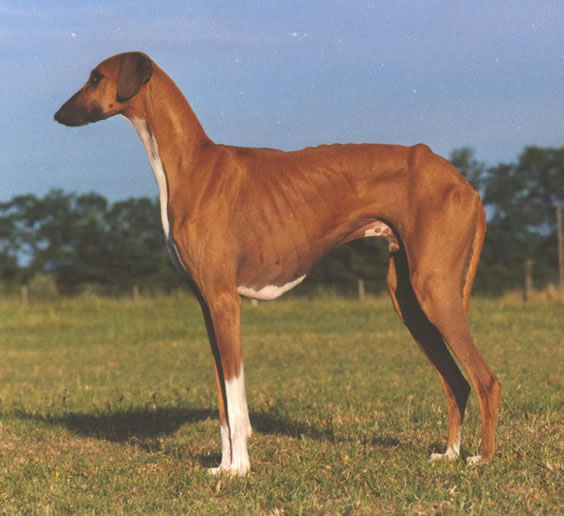The Azawakh is the newest sighthound breed recognized by the AKC. These large yet lean, elegant hounds make great companions for those who understand the special responsibilities required to care for high prey-driven hounds. Owners that are up for that challenge will be gifted for the next 12-15 years with a gentle and loyal friend that will form an almost unbreakable bond.
Some Azawakhs can be protective of their people and will take it upon themselves to guard them against threats. Other members of the breed make better watch dogs than guard dogs (barking at intruders but taking it no further). Still others couldn’t care less about a stranger breaking into the house. The protectiveness of the dog varies by the line and the individual, although a prospective owner should be prepared for a higher-than average territorial nature.
Although the Azawakh can run up to 35 miles an hour, in the house the breed is extremely laid-back and easygoing. They utilize their energy in spurts – either they are racing across the yard or they are sleeping on the couch! They do need regular exercise, however, and make great jogging and hiking companions. Although they should also have regular access to fenced yards in which to run, this will not fully satisfy their exercise requirements as they won’t run for long periods without encouragement from another dog or their owner.
Although not overly demonstrative of his affection (he prefers a quiet, subtle demonstration of his love), the Azawakh still needs plenty of human contact and does not make a good kennel dog. This breed must live in the house with his owner or family. Furthermore, he is not fond of being locked in a crate for very long stretches of time. Most Azawakhs appreciate the company of other dogs and do better with canine company when their owner has to leave for work. 
Many Azawakhs are naturally dominant and more apt to vie for the top position in the pack. This is not normally a problem unless there is another dog in the household who wants this position as well. Overall, however, they tend to do very well in multi-dog households. The breed also does well in families with children as long as the kids don’t physically hurt the dog. As with all breeds, supervision around kids is always recommended.
A trait not often seen by sighthounds – many Azawakhs can be trusted off-leash! Of course, this does mean that the owner must take the time to train a strong recall. As with all sighthounds, their prey drive is strong and many will not be able to resist the urge to chase a small, furry animal – even despite training. While many Azawakhs are able to live peacefully with cats indoors, that same family cat running around outside may still trigger his chase drive.
The Azawakh is an incredibly intelligent dog and very capable of being trained – as long as the owner or trainer knows what they are doing. They do not respond to harsh methods, nor do they respond to someone whom they don’t respect. The dog needs to see the person as a partner. Furthermore, this ancient breed is very independent so while they possess a strong desire to please their owner, they also have a proclivity for wanting to do things their own way.
When it comes to strangers, the Azawakh needs to meet a person before he decides whether or not he likes him. As such, he is quite reserved with strangers. If the person passes the test… the Azawakh will open up and begin to show his true personality. He can be quite affectionate and even playful with those whom he really loves – but it takes time to establish that bond. Once the bond is there, it is there for good.
Despite their frail appearance, the Azawakh is anything but! In fact, they are structurally quite hardy and able to handle all sorts of weather and terrain (although they hate cold, wet weather). This said, emotionally they are sensitive and do not do well with chaotic owners or lifestyles. They need owners with stable personalities who will socialize them to the outside world while they are puppies. Otherwise they could turn into extremely skittish animals that may be prone to snap.
